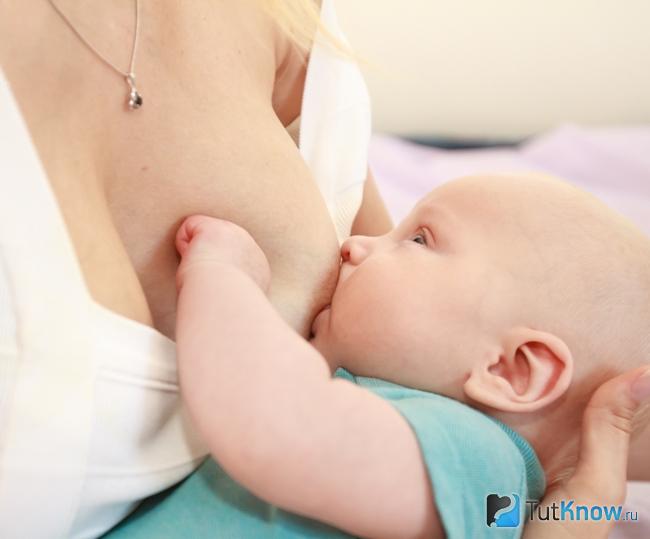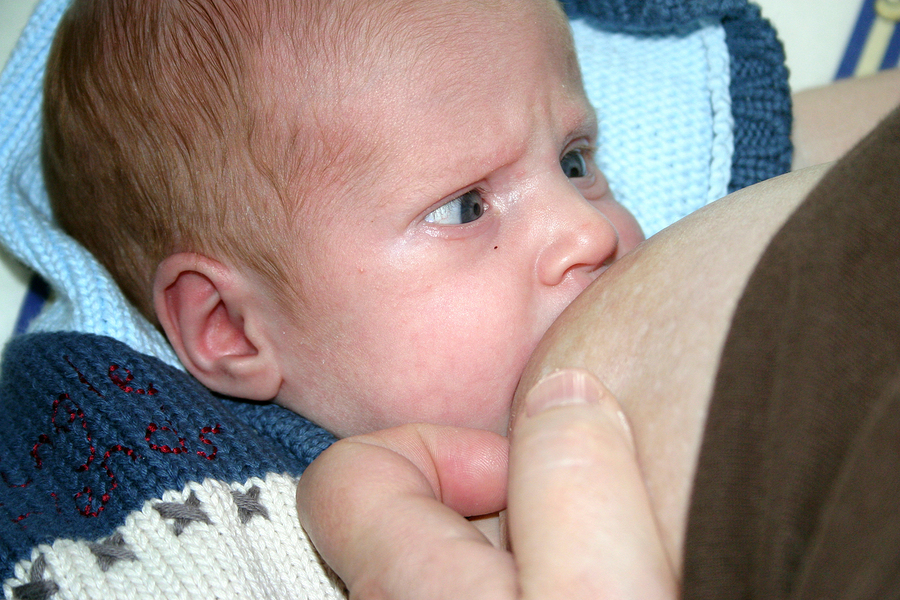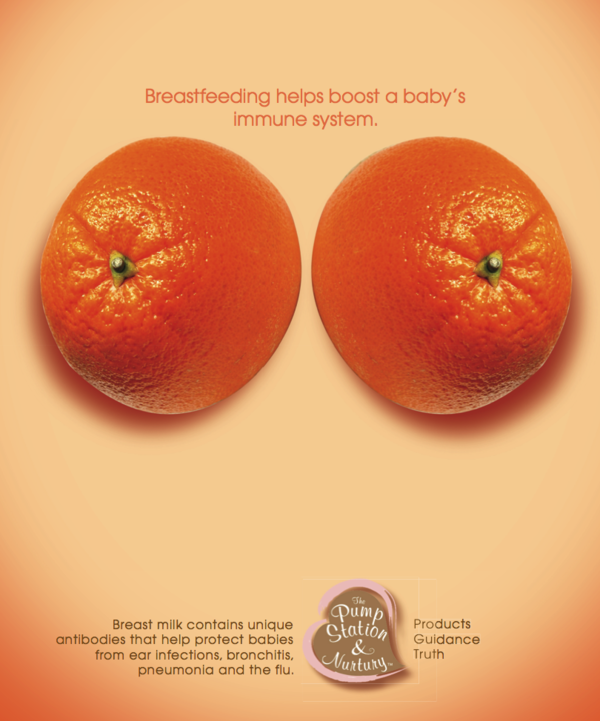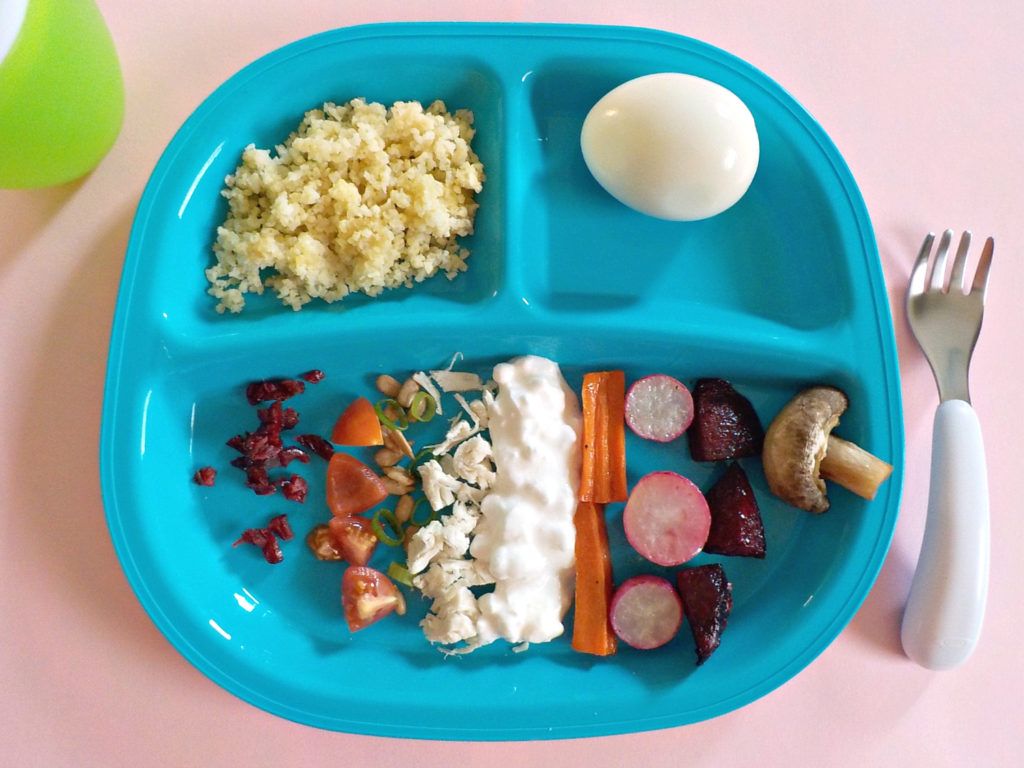Feeding baby by breast
Breastfeeding FAQs: How Much and How Often (for Parents)
Breastfeeding is a natural thing to do, but it still comes with its fair share of questions. Here's what you need to know about how often and how long to breastfeed your baby.
How Often Should I Breastfeed?
Newborn babies should breastfeed 8–12 times per day for about the first month. Breast milk is easily digested, so newborns are hungry often. Frequent feedings helps stimulate your milk production during the first few weeks.
By the time your baby is 1–2 months old, he or she probably will nurse 7–9 times a day.
In the first few weeks of life, breastfeeding should be "on demand" (when your baby is hungry), which is about every 1-1/2 to 3 hours. As newborns get older, they'll nurse less often, and may have a more predictable schedule. Some might feed every 90 minutes, whereas others might go 2–3 hours between feedings.
Newborns should not go more than about 4 hours without feeding, even overnight.
How Do I Count the Time Between Feedings?
Count the length of time between feedings from the time your baby begins to nurse (rather than at the end) to when your little one starts nursing again. In other words, when your doctor asks how often your baby is feeding, you can say "about every 2 hours" if your first feeding started at 6 a.m., the next feeding was around 8 a.m., then 10 a.m., and so on.
Especially at first, you might feel like you're nursing around the clock, which is normal. Soon enough, your baby will go longer between feedings.
How Long Does Nursing Take?
Newborns may nurse for up to 20 minutes or longer on one or both breasts. As babies get older and more skilled at breastfeeding, they may take about 5–10 minutes on each side.
How long it takes to breastfeed depends on you, your baby, and other things, such as whether:
- your milk supply has come in (this usually happens 2–5 days after birth)
- your let-down reflex (which causes milk to flow from the nipple) happens right away or after a few minutes into a feeding
- your milk flow is slow or fast
- the baby has a good latch, taking in as much as possible of your areola (the dark circle of skin around your nipple)
- your baby begins gulping right away or takes it slow
- your baby is sleepy or distracted
Call your doctor if you're worried that your baby's feedings seem too short or too long.![]()
When Should I Alternate Breasts?
Alternate breasts and try to give each one the same amount of nursing time throughout the day. This helps to keep up your milk supply in both breasts and prevents painful engorgement (when your breasts overfill with milk).
You may switch breasts in the middle of each feeding and then alternate which breast you offer first for each feeding. Can't remember where your baby last nursed? It can help to attach a reminder — like a safety pin or small ribbon — to your bra strap so you'll know which breast your baby last nursed on. Then, start with that breast at the next feeding. Or, keep a notebook handy or use a breastfeeding app to keep track of how your baby feeds.
Your baby may like switching breasts at each feeding or prefer to nurse just on one side. If so, then offer the other breast at the next feeding. Do whatever works best and is the most comfortable for you and your baby.
How Often Should I Burp My Baby During Feedings?
After your baby finishes on one side, try burping before switching breasts. Sometimes, the movement alone can be enough to cause a baby to burp.
Sometimes, the movement alone can be enough to cause a baby to burp.
Some infants need more burping, others less, and it can vary from feeding to feeding.
If your baby spits up a lot, try burping more often. While it's normal for infants to "spit up" a small amount after eating or during burping, a baby should not vomit after feeding. If your baby throws up all or most of a feeding, there could be a problem that needs medical care. If you're worried that your baby is spitting up too much, call your doctor.
Why Is My Baby Hungrier Than Usual?
When babies go through a period of rapid growth (called a growth spurt), they want to eat more than usual. These can happen at any time. But in the early months, growth spurts often happen when a baby is:
- 7–14 days old
- 2 months old
- 4 months old
- 6 months old
During these times and whenever your baby seems extra hungry, follow your little one's hunger cues. You may need to breastfeed more often for a while.
How Long Should I Breastfeed My Baby?
That's a personal choice. Experts recommend that babies be breastfed exclusively (without formula, water, juice, non–breast milk, or food) for the first 6 months. Then, breastfeeding can continue until 12 months (and beyond) if it's working for you and your baby.
Breastfeeding has many benefits for mom and baby both. Studies show that breastfeeding can lessen a baby's chances of diarrhea, ear infections, and bacterial meningitis, or make symptoms less severe. Breastfeeding also may protect children from sudden infant death syndrome (SIDS), diabetes, obesity, and asthma.
For moms, breastfeeding burns calories and helps shrink the uterus. In fact, breastfeeding moms might return to their pre–pregnancy shape and weight quicker. Breastfeeding also helps lower a woman's risk of diseases like:
- breast cancer
- high blood pressure
- diabetes
- heart disease
It also might help protect moms from uterine cancer and ovarian cancer.
Breastfeeding and Returning to Your Workplace | Nutrition
Many parents have questions about expressing breast milk when returning to their workplace after having a baby. Whether returning to work from maternity leave or starting a new job after having your baby, you may be working from home, at a work site, or some combination of the two. Below you will find common questions with information and resources to help you prepare to return to your workplace. The Office on Women’s Healthexternal icon provides additional information.
What are my rights as a breastfeeding employee?
The federal Break Time for Nursing Mothers Provisionexternal icon of the Patient Protection and Affordable Care Act requires employers to support breastfeeding employees by providing:
- A reasonable break time to express breast milk for 1 year after your child’s birth.
- A private, non-bathroom space to express breast milk.
This law applies to most hourly employees and some salaried employees (nonexempt workers) who are covered by the Fair Labor Standards Actexternal icon. Most states also have laws that protect breastfeeding employees.
Most states also have laws that protect breastfeeding employees.
For breastfeeding people who work in settings with higher risk of potential exposure to COVID-19, such as health care settings, they should wear a mask while breastfeeding or expressing milk in the workplace. Learn more at Care for Breastfeeding People.
How do I talk with my employer about my needs as I return to work?
If you work outside your home, talk with your employer before you return to your workplace about expressing breast milk during work hours. Having this conversation early will help make sure a plan is in place.
Talk with your employer about:
- Where there is a private, non-bathroom space to express breast milk.
- Where breast milk can be stored (eg, refrigerator, insulated cooler).
- Where pump parts can be cleaned.
- What times are best for you during your work schedule for expressing milk.
The timing and length of breaks needed to express milk and clean breast pump parts may change from day to day and over time. It may be helpful to discuss this with your employer since they may not be familiar with the process of expressing milk or cleaning pump equipment.
It may be helpful to discuss this with your employer since they may not be familiar with the process of expressing milk or cleaning pump equipment.
Some bras and pumps are designed to be used hands-free! This allows you to collect milk for your baby while doing other things.
How should I clean my breast pump kit parts at my workplace?
For best practices on cleaning pump kit parts, visit CDC’s FAQ page on cleaning breast milk pump parts.
What if I don’t have time to wash pump parts or have access to a sink and water to wash parts?
Careful cleaning of your breast pump parts after every use is important to prevent germs from contaminating the milk you feed your baby. Cleaning breast pump parts at work may require creative solutions depending on your workplace. Here are some ways that you might handle these challenges:
- Bring multiple breast pump kits to your workplace so that a clean kit can be used for each pumping session. Take used parts home after work and wash them all at once.

- If you have access to a microwave, rinse parts and then use steam bags made for cleaning breast pump parts. Some pump parts should not be steamed in the microwave, so be sure to check the manufacturer’s instructions.
- Learn how to hand express directly into milk collection containers.
Can I store my pump parts in the refrigerator between pump sessions while at my workplace?
The CDC and most breast pump manufacturers recommend cleaning pump parts after every use to help protect babies from germs.
More information about storing pump parts in the refrigerator between pumping sessions can be found on CDC’s FAQ page on breast pump cleaning.
Where can I store breast milk at my workplace?
- In the refrigerator: Expressed breast milk is a food and may be stored alongside other foods in any refrigerator that is appropriate for food storage.
- In an insulated cooler: You can store and carry freshly expressed milk in an insulated cooler bag with frozen ice packs for up to 24 hours.
 Once you get home use the milk right away, store it in the refrigerator, or freeze it.
Once you get home use the milk right away, store it in the refrigerator, or freeze it.
Always label breast milk containers with your name and the date you expressed the milk. You can also label your cooler with your name and contact information.
How can I pump and store breast milk if my work requires travel?
For detailed information about travel, visit Travel Recommendations for Nursing Families
What else might help me continue breastfeeding after returning to work?
- Practice using your pump or hand expressing breast milk before returning to work so you are comfortable with the process.
- Build a supply of frozen breast milk before returning to work.
- Think about how much breast milk you will need to leave at home or at childcare for your baby before your first day back at work.
- Think about how often you will need to pump or express breast milk while at work to have enough for your baby while you are apart.

- Once breastfeeding is going well, practice bottle feeding your breast milk so your baby will be used to a bottle while you are away at work. If your baby is having trouble taking a bottle at first, try having another adult feed your baby with the bottle. You can also try different types of bottles and nipples.
Top of Page
- Break times and spaces to express milkexternal icon
- Helpful tips for pumping breast milkexternal icon
- General breast milk storage
- Breast milk storage at work
- FAQs on breast pump cleaning
- Types of employers that provide breastfeeding support in the workplaceexternal icon
- Traveling with Children | Transportation Security Administration (tsa.gov)external icon
Breastfeeding rules
Breastfeeding rules and techniques.
Every woman can breastfeed her baby.
All troubles arise from ignorance of the rules and techniques of feeding.
The first rule is very important - early contact of the mother with the child in the maternity hospital, in the first minutes after birth.
Psychological benefits of breastfeeding.
Breast milk has a positive effect on the formation of the emotional and intellectual sphere, the development of creative abilities.
- emotional connection from both mother and child:
- close, loving relationship between mother and child;
- - emotional satisfaction of mother and child;
- - the child cries less, positive emotions are formed;
- - the mother becomes more affectionate, attachment to the child appears, self-confidence; : - less likely that the child will be abandoned or offended; breast milk also protects against the occurrence of neuroses.
- Development: the child shows the best results of intellectual development and creative abilities at an older age.
No less important is the correct laying of the baby to the breast, because this is a powerful stimulus to provide the right amount of milk - galactopoiesis.
- The position of the mother during feeding should be comfortable. It is better to feed the baby either from a lying or sitting position.
- Take the chest in the palm of your hand with 4 fingers from below and 1 from above.
- Touch the nipple to the baby's lips so that he opens his mouth.
- The baby should capture not only the nipple, but also the halo.
- If the mother felt pain in her chest while feeding the baby, this means that the baby did not take the breast correctly. In this case, it is necessary to carefully touch the child's lips with a finger so that he opens his mouth, and not pull it by force. Try to apply to the chest again.
- Feed the baby on demand. In the first days up to 10-14 times a day. After the formation of lactation (after approximately 2-3 weeks), the regimen is established independently and is 6-7 feedings per day.
7, It is not recommended to take night breaks in feeding.
- Frequent feeding, including night feeding, contributes to the development of the prolactin and oxytocin reflex.

Produced BEFORE and DURING breastfeeding causes milk to DROP
Sensory suction impulses
- Promotes uterine contractions
- No additional food other than breast milk should be given to a baby under 3-4 months of age.
- It must be remembered that during the day the baby sucks out different amounts of milk.
- Negative emotions block the oxytocin reflex, spasm occurs and milk is poorly excreted.
- The positive psychological attitude of the mother, the desire to breastfeed her child and the belief that breast milk is the best food for children are important.
- It is important to observe the rules of personal hygiene (clean linen, hands, mother's chest).
- The duration of feeding is currently not limited.
The most important factors in the development of full lactation in the early days are:
- Skin to skin contact;
- Early breastfeeding;
- Joint stay of mother and child in a maternity hospital;
- Feeding the baby "on demand";
- Application to both mammary glands;
- Exclusion of pre-lactation feeding and supplementation; • Exclusion of devices imitating mother's breasts (nipples, pacifiers).

There are certain rules to follow with an infant:
- There should not be co-sleeping with an infant!!!
- forbid yourself to take a baby to bed !!!!!!!
- the baby is not a place in bed with other family members, also do not put him to sleep with each other, in order to avoid harm in a dream;
- do not overheat the baby, there is no need to wrap him in a large amount of clothes;
- no need to swaddle the baby tightly. He should be able to change the position of the head and body in case of lack of air;
- the surface of the bed should be pretty flat, without extra pillows, duvets, blankets. These items can accidentally cut off the oxygen supply to the baby. But even under the weight of your body, it should not fall through, otherwise there is a high probability that the child will get there on his face and strangulation may occur;
- there is no need to put the child to sleep between you and the back of the sofa, even if it is soft, so that it does not become sandwiched between the fabric and the body of an adult;
- consider measures that will protect your baby from an unexpected fall from your bed.
Feeding technique Bottle feeding
Feeding technique Bottle feeding is not really difficult. However, there are a few feeding rules you should remember to avoid baby tears, food spills, and other problems.
The position taken by the feeder should resemble the natural position of the mother during breastfeeding:
- The child's head should rest on the left arm.
- The nipple that enters the baby's mouth must always be full of milk or formula - otherwise the baby will swallow air which can cause colic.
- The appearance of bubbles in the bottle means that the child is eating incorrectly and you need to help him, change the position, tilt the bottle in a different way.
- Do not leave a child alone with a bottle and do not let the baby sleep with a bottle in his mouth - in both cases this can lead to choking.
- It is best to feed your baby when he is in your arms - babies feel safest in their parents' arms.
- Remember that the baby's head should always be slightly higher than his torso.
- Make sure that the baby does not tilt the head too far back or forward - if the head is in the wrong position, it becomes more difficult for the baby to eat, the wrong head position can also cause food to enter the respiratory tract.
- When a baby eats from a bottle, he swallows air with nutrition, so he may feel full, despite the fact that he has eaten little.
- Take breaks every 5 minutes during feeding so that the baby has the opportunity to burp.
- After he has let out air and some nourishment, he will feel hungry again.
- In order for the baby to burp, you need to change his position: put the baby's head on your shoulder and support his back with your hands.
- The child must be in an upright or semi-upright position. If the baby does not burp between feedings, the accumulated air will lead to the formation of painful gases.
- The sitting position is the most classic feeding position. With this feeding, the baby sits on your hips with his booty, his back leans against your left hand, and his head is in the crook of the elbow of his left hand.
With this feeding, the baby sits on your hips with his booty, his back leans against your left hand, and his head is in the crook of the elbow of his left hand.
- Handling the bottle from the side is convenient if the baby suffers from gastroesophageal reflux or has a runny nose. In this option, the child lies on his side (according to the recommendations of doctors, it is better for the child to lie on his left side), and you are nearby and can also take a position lying on your side, turning to face him.
- Clean and sterilize all parts before each use.
- Do not use abrasive cleaners or antibacterial cleaners on bottles and teats.
- While inspecting the nipple, pull it in all directions to make sure it is intact.
- Throw away bottles and nipples at the first sign of damage, wear and scratches.
- Change nipples and cups every 3 months.
- Do not heat milk in the microwave as it may heat unevenly and cause burns to the baby during bottle feeding.

- Always check the milk temperature before feeding.
Breastfeeding a newborn | What to Expect in the First Week
The first week of a baby's life is a wonderful but hectic time, especially if you haven't breastfed before. Our breastfeeding tips will help you settle in as quickly as possible
Share this information
The first time after childbirth, mothers are often confused. The body is still recovering, and you are already starting to get to know your newborn baby. The emotional state during this period can be unstable, especially between the second and fifth day, when many women have milk 1 and at the same time postpartum depression begins 2 . In addition, people around often expect (and demand) that a woman come to her senses as soon as possible and become a “super mom”. But the best thing to do this first week is just to be with your baby and get breastfeeding going.
When should I start breastfeeding my newborn?
Try to breastfeed your baby within the first hour after birth. When the baby latch onto the breast and begins sucking rhythmically, it stimulates the mammary gland cells and starts milk production. 1 It is not for nothing that this time is called the “magic hour”!
“Ideally, the baby should be placed on the mother's stomach immediately after birth so that it can immediately attach to the breast. He won't necessarily eat, but he should be able to,” explains Cathy Garbin, an internationally recognized expert on breastfeeding.
“Hold your baby and let him find the breast on his own and put the nipple in his mouth. This is called the breast-seeking reflex. On the Internet you can watch videos that show what this process looks like. If the baby does not latch onto the nipple on its own, the midwife will help to properly attach it to the breast. But for starters, it’s good to give the baby the opportunity to do it on their own. In this case, the optimal position for the mother is reclining. ”
In this case, the optimal position for the mother is reclining. ”
Don't spend that special first hour of your baby's life weighing and swaddling, or at least wait until he's suckling for the first time. Enjoy hugs and close skin-to-skin contact. This promotes the production of oxytocin, the hormone of love, in you and your baby, and oxytocin plays a key role in the supply of the first breast milk - colostrum. 3
“As soon as the obstetricians were convinced that our son was healthy, the three of us — me, my husband and our baby — were left to give us the opportunity to get to know each other. It was a very special hour - an hour of awkwardness, turbulent emotions and bliss. During this time, I breastfed my son twice, ”recalls Ellie, a mother of two from the UK.
Did you know that breastfeeding helps to recover after childbirth? This is because oxytocin stimulates uterine contractions. In the first hours after childbirth, this contributes to the natural release of the placenta and reduces blood loss. 4
4
What if the birth didn't go according to plan?
If you had a cesarean section or other complications during childbirth,
You can still make skin-to-skin contact with your baby and breastfeed him in the first hours after birth.
“If you can't hold your baby, have your partner do it for you and ensure skin-to-skin contact with the baby. This will give the baby a sense of security, care and warmth so that he can hold on until you recover, ”Katie advises.
If the baby is unable to breastfeed, it is advisable to start expressing milk as early as possible and do so as often as possible until the baby is able to feed on its own. “While breastfeeding in the first hours after birth lays an excellent foundation for the future, it is not so important,” Cathy reassures. “It is much more important to start lactation so that in the future, if necessary, you can start breastfeeding.”
To start milk production, you can express milk manually or use a breast pump that can be given to you at the hospital.![]() 5 And with expressed precious colostrum, it will be possible to feed the child. This is especially important if the baby was born premature or weak, since breast milk is extremely healthy.
5 And with expressed precious colostrum, it will be possible to feed the child. This is especially important if the baby was born premature or weak, since breast milk is extremely healthy.
If a baby is born prematurely or has a medical condition and cannot be breastfed immediately, this is no reason not to continue breastfeeding. “I have worked with many new mothers who were unable to breastfeed their baby for the first six weeks due to preterm labor or other reasons. Nevertheless, all of them later successfully switched to breastfeeding,” says Kathy.
Does the baby latch on correctly?
Correct breastfeeding is essential for successful breastfeeding 6 , as it determines how effectively the baby will suckle milk and hence grow and develop. Latching on the breast incorrectly can cause sore or damaged nipples, so don't hesitate to ask your doctor to check that your baby is properly attached to the breast, even if you are told that everything is fine and you do not see obvious problems - especially while you are in the hospital.
“While I was in the hospital, I called the doctor at every feed and asked me to check if I was breastfeeding correctly,” says Emma, mother of two from Australia. - There were several cases when it seemed to me that everything seemed to be right, but it was painful to feed, and the doctor helped me take the baby off the breast and attach it correctly. By the time I was discharged, I had already learned to do it confidently.”
When applying to the breast, point the nipple towards the palate. This will allow the baby to take the nipple and part of the areola under it into their mouth. It will be easier for him to suck if he has both the nipple and part of the areola around in his mouth. 6
“If the baby latch on properly, it doesn't cause discomfort and it causes a pulling sensation, not pain,” explains Cathy. - The baby's mouth is wide open, the lower lip may be slightly turned outward, and the upper one lies comfortably on the chest. The body language of the child indicates that he is comfortable. There isn't much milk at this early stage, so you probably won't notice your baby swallowing, but he will suckle a lot and nurse frequently."
There isn't much milk at this early stage, so you probably won't notice your baby swallowing, but he will suckle a lot and nurse frequently."
How often should a newborn be fed?
The frequency and duration of breastfeeding in the first week can vary greatly. “The first 24 hours of life are completely different for different children. Someone sleeps a lot (after all, childbirth is tiring!), And someone often eats, says Katie. - Such a variety greatly confuses young mothers. Everyone gives different advice, so it's important to remember that every mother and child is different."
“Colostrum is thicker than mature breast milk and is produced in smaller amounts, but has many benefits. When the baby eats colostrum, he learns to suck, swallow and breathe until milk begins to flow in more volume, ”explains Cathy.
Milk usually arrives on the second or fourth day after delivery. Until this time, the baby is applied to the breast 8-12 times a day (and sometimes more often!), including at night. 7 Feeding may take 10-15 minutes at this stage, or 45 minutes or even an hour, as the baby is just beginning to develop the muscles and coordination needed to suckle effectively.
7 Feeding may take 10-15 minutes at this stage, or 45 minutes or even an hour, as the baby is just beginning to develop the muscles and coordination needed to suckle effectively.
“At first, the intensity of feeding is very high, often higher than many people realize, and this is shocking to most new mothers,” says Cathy. - Sometimes mom has no time to go to the toilet, take a shower and have a snack. It usually comes as a surprise."
Camilla, a mother from Australia, experienced this. “The first week, Frankie ate every two hours, day and night, and each time it took half an hour to an hour to feed,” she recalls. “My husband and I were completely exhausted!”
Do I need to feed my newborn on a schedule?
The good news is that frequent feeding promotes lactation and stimulates milk production. 7 The more your baby eats, the more milk you will have. Therefore, forget about feeding your newborn on a schedule - this way he will have less chance of feeding. Try to feed your baby when he signals that he is hungry 8 :
Try to feed your baby when he signals that he is hungry 8 :
- tossing and turning in his sleep;
- opens eyes;
- turns his head if he feels a touch on his cheek;
- sticks out tongue;
- groans;
- licks lips;
- sucks fingers;
- is naughty;
- whimpers;
- is crying.
Crying is the last sign of hunger, so when in doubt, just offer your baby the breast. If he bursts into tears, it will be more difficult to feed him, especially at first, when both of you are just learning how to do it. As your baby grows, he will likely eat less frequently and take less time to feed, so breastfeeding will seem more predictable.
Does breastfeeding hurt?
You may have heard that breastfeeding is not painful at all, but in fact, in the first days, many new mothers experience discomfort. And this is not at all surprising, given that the nipples are not used to such frequent and strong sucking.
“Breastfeeding can be uncomfortable for the first couple of days – your body and your baby are just getting used to it. If a baby eats for too long and does not latch well, the sensations are almost the same as from unworn new shoes, Cathy compares. Just as tight shoes can rub your feet, improper suckling can damage your nipples. Prevention is always better than cure, so if the pain persists after a few days of feeding, contact a lactation consultant or healthcare professional.”
Maria, a mother from Canada, agrees: “Although my son seemed to latch onto the breast well, he damaged his nipples while feeding, and I was in pain. As it turned out, the reason was a shortened frenulum of the tongue. The breastfeeding specialists at our city clinic have been of great help in diagnosis and treatment.”
In addition, you may experience period cramps during the first few days after breastfeeding, especially if this is not your first baby. This is the so-called postpartum pain. The fact is that oxytocin, which is released during breastfeeding, contributes to further contraction of the uterus to restore its normal size. 4
The fact is that oxytocin, which is released during breastfeeding, contributes to further contraction of the uterus to restore its normal size. 4
When milk arrives, the breasts usually become fuller, firmer and larger than before delivery. In some women, the breasts swell, harden and become very sensitive - swelling of the mammary glands occurs. 10 Frequent breastfeeding relieves these symptoms. For more breast care tips, read our article What is Breast Swelling?
How often does a newborn urinate and defecate?
What goes into the body must go back out. Colostrum
has a laxative effect, helping to eliminate meconium - the original feces. It looks a little scary - black and sticky, like tar. 11 But don't worry, it won't always be like this. Breastfed babies usually have a slightly sweet smell of stool.
How many times a day you will need to change diapers and how the contents should look like, see below.
Day one
- Frequency: once or more.

- Colour: greenish black.
- Texture: sticky like tar.
Second day
- Frequency: twice or more.
- Colour: dark greenish brown.
- Texture: less sticky.
Day three
- Frequency: twice or more.
- Colour: greenish brown to brownish yellow.
- Texture: non-sticky.
Fourth day and then the entire first month
- Frequency: twice or more.
- Color: yellow (feces should turn yellow no later than by the end of the fourth day).
- Texture: grainy (like mustard with grains interspersed). Leaky and watery.
The baby's urine should be light yellow. On average, babies urinate once a day for the first two days. Starting around the third day, the number of wet diapers increases to three, and from the fifth day onwards, diapers have to be changed five times a day or more often. In addition, during the first few days, the weight of wet diapers increases. 11
11
Does the baby get enough breast milk?
Since very little milk is produced at first,
you may feel that your baby is not getting enough milk. But if you feed your baby on demand, you will produce exactly as much milk as he needs. If you want to keep the process under control, be guided by the frequency of diaper changes above. If your baby soils less diapers, check with your doctor.
“For the first three or four weeks, most babies just eat and sleep. If the child is worried and constantly asks for a breast, you should consult with your doctor, ”Katie recommends.
Sometimes the baby may vomit after feeding. If the vomit is the color of milk, this is not a cause for concern. But if there are orange, red, green, brown or black blotches in it, or the child vomits with a "fountain", consult a doctor. You should also consult a doctor if the baby has a high temperature, the fontanel (soft spot on the head) has sunk, blood is found in the stool, and also if the weight recorded at birth has not recovered within two weeks. 11
11
But if there are no frightening symptoms and the baby is growing at a normal pace, then he has enough milk. Soon you will both get used to breastfeeding and establish a more stable routine.
For the next step in breastfeeding, see Breastfeeding in the First Month: What to Expect.
Literature
1 Pang WW, Hartmann PE. Initiation of human lactation: secretory differentiation and secretory activation. J9 Mammary Gland Biol Neoplasia . 2007;12(4):211-221. - Pang, W.W., Hartmann, P.I., "Lactation initiation in the lactating mother: secretory differentiation and secretory activation." G Mammary Gland Biol Neoplasia. 2007;12(4):211-221.
2 Shashi R et al. Postpartum psychiatric disorders: Early diagnosis and management. Indian J Psychiatry . 2015; 57( Suppl 2): S 216– S 221. - Shashi R. et al., Postnatal mental disorders: early diagnosis and treatment. Indian J Saikiatri. 2015; 57(App 2):S216-S221.
- Shashi R. et al., Postnatal mental disorders: early diagnosis and treatment. Indian J Saikiatri. 2015; 57(App 2):S216-S221.
3 Moberg KU, Prime DK. Oxytocin effects in mothers and infants during breastfeeding. Infant . 2013;9(6):201-206. - Moberg K, Prime DK, "The effects of oxytocin on mother and child during breastfeeding." Infant. 2013;9(6):201-206.
4 Sobhy SI, Mohame NA. The effect of early initiation of breast feeding on the amount of vaginal blood loss during the fourth stage of labor. J Egypt Public Health Assoc . 2004;79(1-2):1-12. - Sobhi SI, Moham NA, "Early initiation of breastfeeding and its effect on vaginal bleeding in the fourth stage of labor." G Egypt Public Health Assoc. 2004;79(1-2):1-2.
5 Meier PP et al. Which breast pump for which mother: an evidence-based approach to individualizing breast pump technology. J Perinatol . 2016;36(7):493. - Meyer P.P. et al., Breastpump Selection: A Scientific Approach to Customizing Pumping Technology. J Perinatol (Journal of Perinatology). 2016;36(7):493-499.
J Perinatol . 2016;36(7):493. - Meyer P.P. et al., Breastpump Selection: A Scientific Approach to Customizing Pumping Technology. J Perinatol (Journal of Perinatology). 2016;36(7):493-499.
6 Cadwell K. Latching - On and Suckling of the Healthy Term Neonate: Breastfeeding Assessment. J Midwifery & Women ’ s Health . 2007;52(6):638-642. — Cadwell, K., "Latching and sucking in healthy newborns: evaluation of breastfeeding." F Midwifery Women Health. 2007;52(6):638-642.
7 Kent JC et al. Principles for maintaining or increasing breast milk production. J Obstet , Gynecol , & Neonatal Nurs . 2012;41(1):114-121. - Kent J.S. et al., "Principles for Maintaining and Increasing Milk Production". J Obstet Ginecol Neoneutal Nurs. 2012;41(1):114-121.
J Obstet Ginecol Neoneutal Nurs. 2012;41(1):114-121.
8 Australian Breastfeeding Association [ Internet ]. Feeding cues ; 2017 Sep [ cited 2018 Feb ]. - Australian Breastfeeding Association [Internet], Feed Ready Signals; September 2017 [cited February 2018]
9 Jacobs A et al. S3-guidelines for the treatment of inflammatory breast disease during the lactation period. Geburtshilfe Frauenheilkd . 2013;73(12):1202-1208. - Jacobs A. et al., "Recommendations S -3 for the management of inflammatory breast disease during breastfeeding." Geburtskhilfe und Frauenheilkünde. 2013;73(12):1202-1208.
10 Lawrence RA, Lawrence RM. Breastfeeding: A guide for the medical profession.











